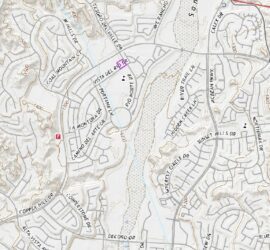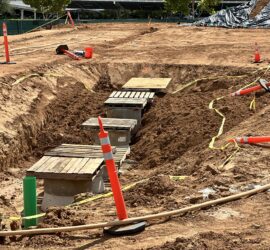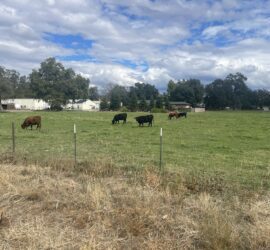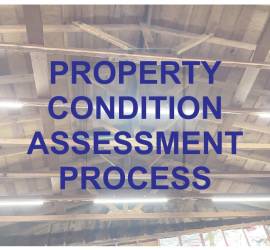SBA Transaction Screen Assessment for SBA Loans
An SBA Transaction Screen Assessment is a brief environmental study of a property and is part of the loan qualification process for properties with low-risk status. Lenders also often refer to this report as a Transaction Screen Review, as it is a step below the more comprehensive Phase 1 Environmental Site Assessment process. In fact, a TSA report may be the minimum prerequisite for the Small Business Administration to consider approval for some low-risk sites with low enough loan amounts. And other loan programs and institutions may also require a TSA as well. Alternatively, a Desktop Environmental Report can be requested, with the same premise and goal as the SBA Transaction Screen Assessment. Updated April 11, 2024.
SBA Transaction Screen Assessment (TSA) vs Phase 1 ESA Reports
Borrowers must understand that an SBA TSA is not a Phase I Environmental Report. Alternatively, it is a limited assessment that covers a portion of the research platform a Phase 1 ESA comprises. In fact, there are various types of Limited Environmental Due Diligence Reports that can help evaluate environmental risk. In particular, the SBA Program prefers the Phase 1 ESA and Transaction Screen Assessment to meet the respective ASTM Standards. This is a guideline for comprehensive and limited environmental risk assessment reports. In fact, at a minimum, the Small Business Administration prefers addressing low-risk sites with these environmental transaction screening reports, if not a complete Phase 1 ESA. This is typical for 7(a) and 504 loan programs. Additional information about classifying “Low-Risk” versus “High-Risk” properties is provided in the sections below.
Knowing the SBA Transaction Screen Assessment Requirement
In particular, an SBA Transaction Screen Assessment satisfies the minimum environmental due diligence requirements for commercial lots. In fact, this is almost always preferred to finance even low-risk properties with loan amounts that are in excess of $150,000.
SBA Procedures & Policies
The SBA posts procedures and policies for all leaders dealing with potential environmental risks. Per the administration, in circumstances where an SBA loan application occurs over commercial or industrial real estate, professional environmental due diligence services are necessary. This includes an SBA TSA report. And there are additional pillars to this rule as well. For instance, if the commercial lot is in association with an industry or land use that is “environmentally sensitive,” environmental screen assessments become a requirement. Furthermore, the amount of the load plays a role in warranting the necessity of an SBA Transaction Screen Assessment as well. For example, at this moment, the SBA indicates that if the loan amount is less than $150,000, the transaction is not considered “environmentally sensitive.” Nonetheless, an environmental questionnaire is required by the borrower.
Low-Risk vs High-Risk
The definition of “Low-Risk” vs “High-Risk” properties is standard at the forefront of the loan application process. The SBA has definitions and guidelines for these determinations. For instance, a low-risk property may be a residential property that is adjacent to a gasoline station. On the other hand, a higher-risk site might be a gasoline station. Thus, requiring a comprehensive review. Low-risk properties may be difficult to classify. Nevertheless, high-risk properties are easily identifiable, as they are typically lots like dry cleaners or gasoline stations. In fact, high-risk sites typically require a complete Phase I Environmental Site Assessment Report. Phase 1 ESA reports additionally provide CERCLA liability protection for innocent land-owners.
SBA Environmental Questionnaire
As part of the preliminary phases of due diligence, the Small Business Administration implements an environmental questionnaire. In general, this requirement applies to all property classifications across the board. Per the results and outcomes of the questionnaire, an SBA Transaction Screen Assessment may become a requirement. Otherwise, a complete Phase 1 ESA may be necessary.




